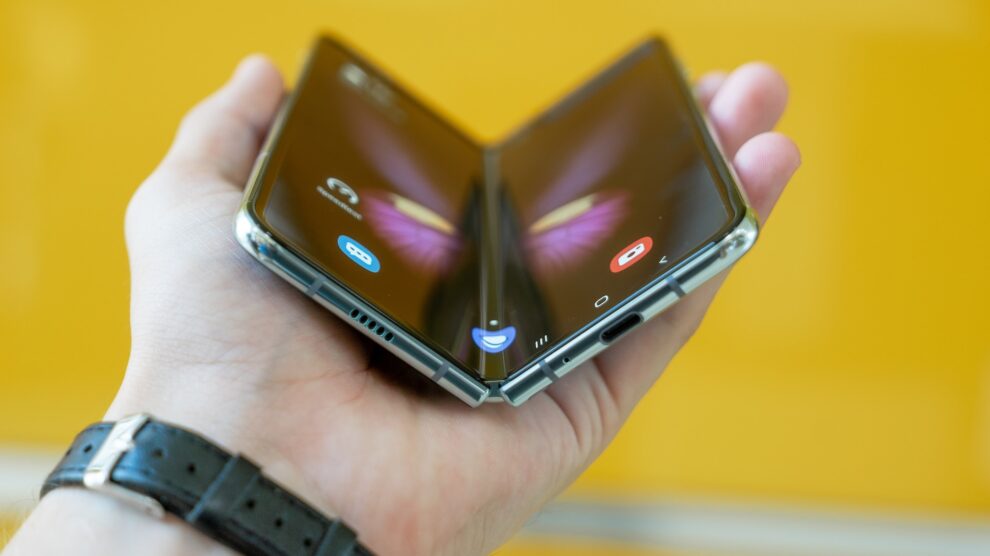The smartphone market is getting extremely saturated at this point of time with manufacturers churning out generic electronic monoliths with minimal bezels and absent headphone jacks. In some respects, the smartphone makers have brought it upon themselves by setting the bar way too high. The introduction of flagship killers offering top tier features at moderate cost has made the general audience impassive to most minor launches unless it is something groundbreaking. Mobile phones with a bendable screen would provide that much needed breath of fresh air. Till then you can choose from the latest line of smartphone launches and get value for money mobile devices.
What’s cooking in the bendable/foldable phone space?
It’s common knowledge that major smartphone manufacturers have been working on bendable phones for quite some time now. Most makers are approaching the problem by building a handheld device comprising of multiple OLED panels which when unfolded reveal one big screen. While the concept shows potential, growth and widespread popularity would be possible if and only if these bendable designs meet the current performance metrics while being foldable. If tech insider scoops are to be trusted the first true bendable phone from Samsung dubbed Galaxy X is in the works and is expected to show up sometime in 2018 or 2019, while Apple’s attempt at a foldable phone might be showcased in 2020. The launch dates however have no concrete confirmation. But, any tech reporter worth their salt will let you know that something’s brewing in this space. While most designers are tinkering with the idea of having hinged phones with dual screens, they lack way too much in the specifications department to provide any stiff competition to the single interface devices. The closest that we have is ZTE’s Axon M. It sported two 5.2-inch LCD screens that opened into a 6.75-inch tablet. It was, however, not a truly flexible device since the second screen slid out from back and was supported by a heavy hinge. The price range didn’t help its case either. Coming in at USD 700, providing less than satisfactory specifications and reduced battery life is definitely not the way to go.
The search for the functional foldable screen
One of the biggest challenges when it comes to bendable phones is also one of its unique traits – the screen. Designing the perfect screen (composed of multiple layers of glass or polymer) which can withstand immense folding and bending while still maintaining quality of display is tough. This extends beyond the screen actually. Even the panel and other ancillary extensions need to bend without intervening with the quality. The hinge at the middle shouldn’t develop any crease or furrow thereby altering the immersive experience and depth of view. Any substance made of glass which is subject to excessive bending is bound to rupture, that problem can be dealt by using multiple OLED layers with extra protective coating to ensure there is no moisture leak. There is some great news in this front, as German glass manufacturing expert Schott have almost perfected the material that is essential to the foldable phone i.e. the bendable glass.
The company has successfully produced glass that is less than 100 micrometers thick compared to the present smartphone glasses which are somewhere around 400 micrometers. Schott has experimented with this material running tens of thousands of bend tests and the material has come out without sustaining any significant damage.
There is however one more hurdle to be overcome here and that is the compromise between form factor and function. Foldable displays need to be durable at the same time look and feel as appealing as their contemporaries. This is a battle which is almost half won but the war is far from over.
Flexible interior parts make the phone truly bendable
While the foldable glass is ready to be incorporated in a device, there lies an issue with the inner devices and circuits. They need to be equally bendable for the device as a whole to be considered a bendable smartphone. We have flexible electronics to thank for that:
i) Flex circuits are made by installing electronic devices on flexible substrates like polyester or by using flexible silicon (made from etching silicon substrates until they’re thinned down significantly to a bending radius of about 5mm)
ii) Flexible primary and secondary batteries that are predominantly used in smart wearables like the high performance lithium-ion battery which provides great flexibility along with high energy density. The flexible lithium-ion battery from Panasonic comes in a thickness of 0.55mm. It sustains no damage even after repeated bending and twisting within a radius of 25 mm or at an angle of about 25 degrees.
The bendable phones need to be durable as well as appealing!
The foldable screen along with the flexible micro-electronics that make up the bendable device, needs to be appealing and at the same time should be sturdy. If it aims to take over the current crop of smartphones, there is one area left to be explored and that is the durability and robustness. Most smartphone users complain that the screen tends to crack even under minimal stress and suffer significant damage even at drops from low height. If the foldable smartphone can address this issue of fragile screen by folding into two halves thereby reducing the chances of being dropped and damaged, that would be major win for the bendable phone industry. What you can expect from a first-generation bendable phone is hints of absence of a hinged dual screen while the later generations may better deal with the bend radius of the foldable screen thereby making it more flexible, continuous and functional.
When are we getting a truly bendable smartphone?
There is no concrete calendar release yet scheduled but Samsung mobile President Dong Jin Koh mentioned that they’re hoping to launch their much coveted smartphone with a bendable display sometime in 2018, in an interview with Bloomberg. According to the interview Koh says there are some roadblocks to be overcome following which they’re all set for the release of their bendable smartphone. Samsung is renowned for making flexible and curved displays when it comes to consumer electronics and perfecting a display that can fold in half is next on their agenda.
What does the future hold for bendable smartphones?
Bendable smartphones will provide users with a chance to own devices that not only look cool but also save a lot of carry space and at the same time provide protection against damage. On the other hand, it provides a chance the developers to experiment with advanced technology like Artificial Intelligence, Augmented and Virtual Reality. In a country like India where nearly 400 million access smartphones yearly, a well-designed, mass produced, cost-effective bendable phone would be perfect in the saturated smartphone market.





